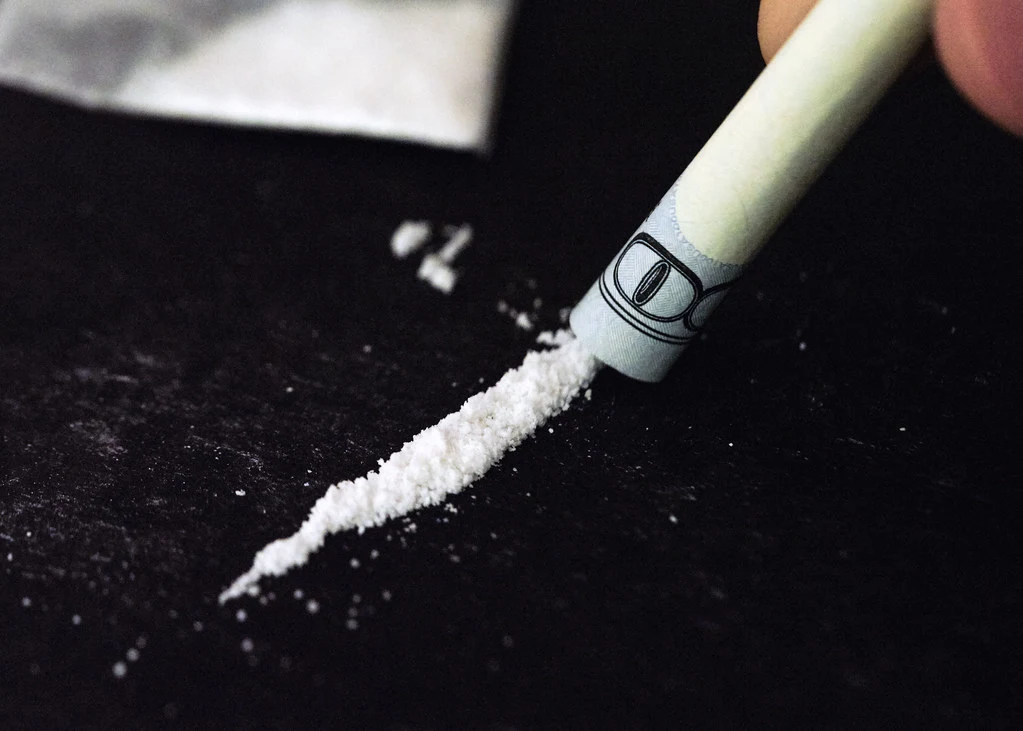Cornerstone
COCAINE
Overview
Information about Cocaine, identifying signs of addiction, and recovery.
Understanding Cocaine as a Drug
Cocaine is a powerful stimulant drug derived from the leaves of the coca plant, native to South America. It has a long history of use, dating back thousands of years when indigenous peoples chewed coca leaves for their stimulant effects. In the late 19th century, cocaine was isolated from coca leaves and used in various medicinal products and beverages, including Coca-Cola. However, as its highly addictive properties and potential for abuse became apparent, cocaine was banned in the United States and many other countries in the early 20th century.
Today, cocaine is classified as a Schedule II controlled substance, indicating a high potential for abuse and dependence. It is primarily used illegally for its euphoric and energizing effects, which can lead to a wide range of physical and mental health problems, as well as social and economic consequences. Cocaine addiction can have devastating impacts on individuals, families, and communities, contributing to increased crime rates, healthcare costs, and lost productivity.1
Jump to the following sections
View our Arizona treatment locations
Understanding Cocaine
Cocaine is derived from the leaves of the coca plant (Erythroxylum coca), which is native to the Andean regions of South America. Indigenous peoples in this area have chewed coca leaves for thousands of years for their stimulant effects and to help cope with high altitude and strenuous work. In 1859, German chemist Albert Niemann isolated the pure form of cocaine from coca leaves, and it quickly gained popularity in the medical community as a local anesthetic and treatment for various ailments. In the early 20th century, cocaine’s highly addictive nature and potential for abuse led to its prohibition in the United States and many other countries.2
Cocaine typically appears as a white, crystalline powder. It is often diluted or “cut” with other substances such as sugar, talcum powder, or other stimulants like amphetamines to increase profits for dealers. Crack cocaine, a freebase form of cocaine, appears as small, irregularly shaped white or off-white “rocks.” Crack cocaine is made by processing cocaine powder with baking soda or ammonia, resulting in a more potent and rapidly acting form of the drug.3
Cocaine has a slight, chemical-like odor that has been described as similar to the smell of gasoline or kerosene. However, the smell of cocaine can be difficult to detect, especially when it is cut with other substances. Crack cocaine, when smoked, produces a distinct, burning smell that has been likened to the odor of burning plastic or rubber.
Cocaine can be ingested in several ways, depending on the form of the drug. Cocaine powder is most commonly snorted through the nose, where it is absorbed into the bloodstream through the nasal tissues. It can also be dissolved in water and injected intravenously or rubbed onto the gums. Crack cocaine is typically smoked using a glass pipe or by inhaling the vapors produced when the drug is heated on aluminum foil. The method of ingestion affects the onset, intensity, and duration of cocaine’s effects.4
The paraphernalia associated with cocaine use varies depending on the method of ingestion. For snorting cocaine powder, users may use razor blades or credit cards to chop the drug into fine lines, as well as straws, rolled-up bills, or small spoons to snort the powder. Injecting cocaine requires syringes, needles, and other injection equipment, such as tourniquets and cotton balls. Smoking crack cocaine involves the use of glass pipes or makeshift smoking devices crafted from aluminum cans or other materials. Other equipment may include small, resealable plastic bags or vials for storing and transporting the drug.5
Identifying Cocaine
Cocaine is a white, crystal-like powder that is often mixed with other substances, making it hard to identify just by looking at it. However, there are a few key things that can help you recognize cocaine.
Pure cocaine has a bitter, numbing taste when placed on the tongue or gums, and it makes your mouth feel numb for a short time. It also dissolves entirely in water, leaving no leftover pieces.
Crack cocaine, a potent and highly addictive form of cocaine, appears as small, off-white or yellowish rocks. Unlike powdered cocaine, crack is smoked, producing an intense but short-lived high, which significantly increases the risk of addiction and harmful health effects.
Facts About Cocaine
Cocaine and the Brain
Cocaine and Heart Health
Cocaine and Mental Health
Cocaine use can trigger or exacerbate mental health problems, such as anxiety, depression, and paranoia. The drug’s effects on the brain can also lead to cocaine-induced psychosis, characterized by hallucinations, delusions, and erratic behavior. Individuals with pre-existing mental health conditions are particularly vulnerable to the adverse psychological effects of cocaine.
Crack Cocaine Epidemic
Cocaine and Pregnancy
Cocaine Addiction Treatment
Treatment for cocaine addiction typically involves a combination of behavioral therapies, such as Cognitive-Behavioral Therapy (CBT) and contingency management, along with support groups and lifestyle changes. While there are currently no FDA-approved medications specifically for treating cocaine addiction, some medicines, such as Disulfiram and Modafinil, have shown promise in reducing cocaine use and cravings.
Recovering From Cocaine Addiction
Overcoming cocaine addiction is a challenging but achievable goal with the proper support, treatment, and determination. While there is no one-size-fits-all approach to recovery, many individuals have found success through a combination of behavioral therapies, support groups, and lifestyle changes. Cognitive-Behavioral Therapy (CBT) can help individuals identify and change the thought patterns and behaviors that contribute to their cocaine use, while contingency management provides tangible rewards for maintaining sobriety. Participating in support groups, such as Cocaine Anonymous or Narcotics Anonymous, can give a sense of community and accountability throughout the recovery process. Developing a solid support network of family, friends, and healthcare professionals is also crucial in overcoming addiction. It is important to remember that recovery is a lifelong journey, and relapse is a common occurrence. However, with perseverance, self-compassion, and a commitment to personal growth, individuals can break free from the grip of cocaine addiction and build a fulfilling life in recovery.
The Stages of Cocaine Addiction
Cocaine addiction typically begins with experimental use, often driven by curiosity or social pressure. As individuals experience the drug’s euphoric effects, occasional use can quickly escalate to regular use as they seek to recreate the intense high.
Over time, tolerance develops, requiring higher doses to achieve the same effects, leading to more frequent and larger consumption quantities. This progression can result in dependence, where the individual feels unable to function without the drug, experiencing intense cravings and withdrawal symptoms.
Eventually, addiction takes hold, marked by a loss of control over use, prioritizing cocaine over other aspects of life, and continued use despite severe negative consequences.
FAQs About Cocaine
What is Cocaine?
Cocaine is a powerful and highly addictive stimulant drug derived from the leaves of the coca plant (Erythroxylon coca), native to South America.
It typically appears as a fine white powder, known as cocaine hydrochloride, and is commonly snorted, injected, or smoked.
Cocaine acts by increasing levels of dopamine in the brain, leading to intense euphoria, increased energy, and heightened alertness.
However, its effects are short-lived, prompting repeated use that can quickly lead to addiction.
The drug’s potent stimulant properties and high potential for abuse make it a significant public health concern, with severe physical, psychological, and social consequences.
What Are the Signs of Cocaine Addiction?
Cocaine addiction can manifest through various physical, behavioral, and psychological signs.
Recognizing these signs early can help in seeking timely intervention and treatment.
Here are some common indicators of cocaine addiction:
- Increased tolerance: Needing larger amounts of cocaine to achieve the same high.
- Cravings: Intense desire or urge to use cocaine.
- Neglecting responsibilities: Ignoring work, school, or family obligations.
- Financial problems: Spending excessive money on cocaine leads to financial instability.
- Changes in social behavior: Isolating from friends and family or associating with a new group of people who use cocaine.
- Risky behaviors: Engaging in dangerous activities to obtain or use cocaine.
- Physical symptoms: Frequent nosebleeds, runny nose, weight loss, and insomnia.
- Psychological symptoms: Anxiety, paranoia, mood swings, and depression.
- Withdrawal symptoms: Fatigue, increased appetite, depression, and agitation when not using cocaine.
- Failed attempts to quit: Inability to stop using cocaine despite wanting to quit.
What Are the Long-Term Consequences of Cocaine Use?
Chronic cocaine use can lead to severe and lasting health issues that affect both the body and mind.
Understanding these long-term consequences is crucial for recognizing the urgency of seeking treatment.
Here are some common long-term effects of cocaine use:
- Cardiovascular problems: Increased risk of heart attack, stroke, and high blood pressure.
- Respiratory issues: Nasal passages and lung damage, leading to chronic respiratory infections.
- Neurological damage: Seizures, headaches, and reduced cognitive function.
- Mental health disorders: Increased risk of anxiety, depression, and paranoia.
- Gastrointestinal complications: Severe bowel decay and stomach ulcers due to reduced blood flow.
- Kidney damage: Rhabdomyolysis (muscle breakdown) leading to kidney failure.
- Liver damage: Hepatitis and other liver-related issues from toxicity.
- Weakened immune system: Increased susceptibility to infections and diseases.
- Social and economic consequences: Job loss, financial instability, and strained relationships.
- Addiction and dependence: Persistent craving and compulsive use despite negative consequences.
What Are the Treatment Options for Cocaine Addiction?
Treatment for cocaine addiction typically involves a combination of behavioral therapies, support groups, and lifestyle changes.
Cognitive-Behavioral Therapy (CBT) can help individuals identify and change the thought patterns and behaviors that contribute to their cocaine use, while contingency management provides tangible rewards for maintaining sobriety.
Participating in support groups, such as Cocaine Anonymous, can give a sense of community and accountability throughout the recovery process.
Currently, there are no FDA-approved medications specifically for treating cocaine addiction, although some medications may be used to address co-occurring mental health disorders or manage withdrawal symptoms.
If you or a loved one is struggling with cocaine addiction, please reach out to us at Cornerstone Healing Center today for a free and confidential assessment of our cocaine addiction rehab.
Sources
CLINICALLY REVIEWED

Faz Yar Khan, MD FACP
Medical Director
Dr. Faz Yar Kahn, our Medical Director, is an American Board of Internal Medicine-certified physician. He graduated from the Medical University of the Americas and completed his residency at Mercy Hospital in Chicago. With expertise in primary care, hospitalist medicine, critical care, and addiction medicine, along with ACLS certification, Dr. Kahn leads our team in providing exceptional substance abuse treatment.
- Read our Editorial Policy

Get Started
Now
Call and speak with one of our caring team members about help for you or a loved one.
Get informed
Visit Cornerstone's
Recovery Knowledge Base
Understanding Cocaine and Panic Attacks
Cocaine and panic attacks are two serious issues that can have a profound impact on an individual’s mental and physical well-being....
Read MoreCocaine Anxiety
Cocaine Abuse Effects Cocaine and anxiety share an intricate connection that profoundly affects an individual’s mental well-being. This powerful stimulant...
Read MoreCocaine and Paranoia
Cocaine, a highly addictive stimulant, lures users with the promise of euphoria but often leads to the unsettling reality of...
Read More























